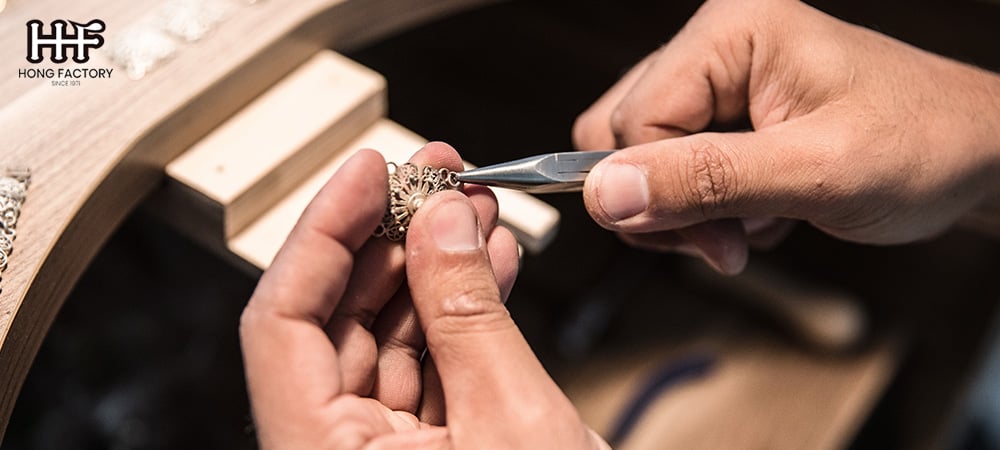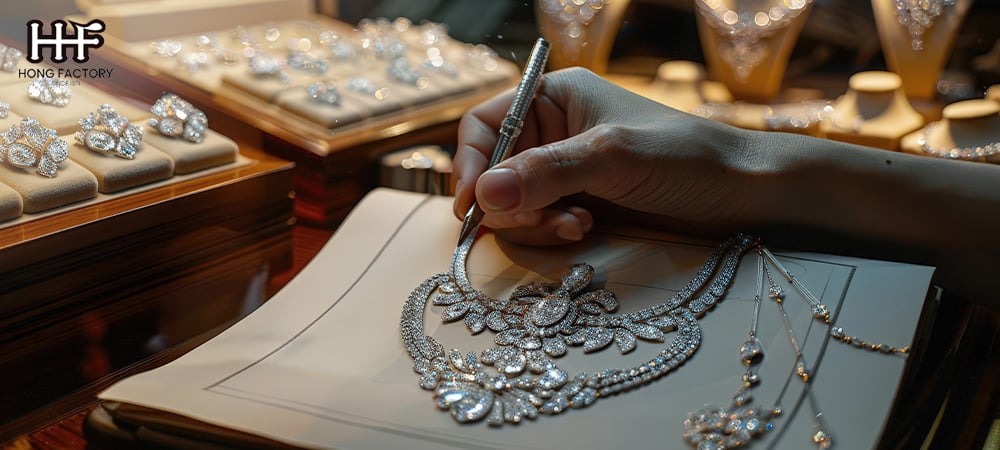In the world of jewelry, silver has long been cherished for its beauty, versatility, and timeless appeal. Among the myriad of options available, custom silver jewelry stands out as a unique expression of personal style and individuality. This article delves into the fascinating world of custom silver jewelry manufacturer, exploring the processes, craftsmanship, and trends that define this captivating industry.
The Allure of Silver Jewelry
Silver has been used in jewelry-making for centuries, prized for its lustrous sheen and malleability. Unlike other precious metals, silver is more affordable while still offering a luxurious appearance. This makes it an ideal choice for those seeking high-quality, elegant pieces without breaking the bank.
Why Choose Custom Silver Jewelry?
Custom silver jewelry offers a level of personalization that mass-produced pieces simply cannot match. Whether it’s a bespoke engagement ring, a personalized pendant, or a unique bracelet, custom pieces allow individuals to express their personality and commemorate special moments in life. The ability to choose specific designs, engravings, and gemstones ensures that each piece is truly one-of-a-kind.

The Manufacturing Process
Creating custom silver jewelry involves several intricate steps that require skill and precision. Here’s an overview of the typical process:
- Design Consultation
The journey begins with a design consultation between the client and the jeweler. This stage is crucial for understanding the client’s vision, preferences, and budget. The jeweler may provide sketches or digital renderings to help visualize the final product.
- Material Selection
Silver is available in various forms, including sterling silver (92.5% pure) and fine silver (99.9% pure). The choice depends on factors like durability and desired finish. Additional materials such as gemstones or enamel may also be selected at this stage.
- Wax Modeling
Once the design is finalized, a wax model of the piece is created. This model serves as a prototype and allows for any necessary adjustments before moving forward with casting.
- Casting
The wax model is used to create a mold, which is then filled with molten silver through a process known as lost-wax casting. This step transforms the design from wax to metal.
- Finishing
After casting, the piece undergoes various finishing processes such as polishing, buffing, and setting stones if required. These steps enhance the appearance and ensure the piece meets quality standards.
- Quality Control
Before delivery, each piece undergoes rigorous quality control checks to ensure it meets both aesthetic and structural standards.
Trends in Custom Silver Jewelry
The world of custom silver jewelry is constantly evolving with new trends emerging regularly. Here are some current trends that are captivating jewelry enthusiasts
- Minimalist Designs Simplicity is key in modern jewelry design. Minimalist pieces with clean lines and understated elegance are highly sought after for their versatility and timeless appeal.
- Nature-Inspired Motifs Designs inspired by nature—such as leaves, flowers, and animals—are popular for their organic beauty and symbolic meanings.
- Mixed Metals Combining silver with other metals like gold or rose gold creates striking contrasts and adds depth to designs.
- Personalized Engravings Engravings offer a way to add sentimental value to jewelry. Names, dates, or meaningful quotes make each piece uniquely personal.
The Role of Technology in Custom Jewelry Manufacturing
Advancements in technology have significantly impacted the custom jewelry manufacturing process:
Computer-Aided Design (CAD)
CAD software allows jewelers to create precise digital models of designs before they are physically produced. This technology enhances accuracy and allows clients to visualize their pieces more clearly.
- 3D printing technology can be used to create detailed wax models quickly and accurately, streamlining the production process.
- Laser Engraving Laser technology enables intricate engravings that would be difficult to achieve by hand, offering more options for customization.
Choosing the Right Custom Silver Jewelry Manufacturer
Selecting a reputable manufacturer is crucial to ensuring quality craftsmanship and satisfaction with your custom piece. Here are some factors to consider
- Experience and Expertise Look for manufacturers with extensive experience in creating custom silver jewelry. Their expertise will ensure your vision is brought to life with precision.
- Portfolio and Reviews Reviewing a manufacturer’s portfolio can provide insight into their style and capabilities. Customer reviews can also offer valuable feedback on their service quality.
- Communication Effective communication is essential throughout the design process. Choose a manufacturer who listens attentively to your ideas and provides clear guidance.
- Ethical Practices Consider manufacturers who prioritize ethical sourcing of materials and environmentally friendly practices in their production processes.

How do I choose the right silver alloy for my custom jewelry
Choosing the right silver alloy for your custom jewelry is an important decision that affects the piece’s appearance, durability, and maintenance. Here’s a guide to help you make an informed choice:
Understanding Silver Alloys
Silver in its pure form is too soft for most jewelry applications, so it is typically alloyed with other metals to enhance its strength and durability. Here are the most common silver alloys used in jewelry
1. Sterling Silver
- Composition : Sterling silver is composed of 92.5% pure silver and 7.5% other metals, usually copper.
- Properties : It is durable, relatively affordable, and has a bright, shiny appearance.
- Use : Sterling silver is the most popular choice for jewelry due to its balance of beauty and strength.
- Considerations : It can tarnish over time but can be easily polished.
2. Fine Silver
- Composition : Fine silver is 99.9% pure silver.
- Properties : It has a lustrous appearance and is more resistant to tarnish than sterling silver.
- Use : Suitable for pieces that won’t experience rough wear, like earrings or pendants.
- Considerations : It is softer and less durable than sterling silver, making it less ideal for rings or bracelets that are subject to more wear and tear.
3. Argentium Silver
- Composition : Argentium silver contains a higher percentage of pure silver than sterling (at least 93.5%) and replaces some of the copper with germanium.
- Properties : It is highly tarnish-resistant, hypoallergenic, and has a brilliant white finish.
- Use : Great for those looking for low-maintenance jewelry with a long-lasting shine.
- Considerations : Generally more expensive than traditional sterling silver.
Conclusion The Art of Custom Silver Jewelry Manufacturing
Custom silver jewelry manufacturing is an art form that combines creativity, skill, and technology to produce pieces that are both beautiful and meaningful. Whether you’re commemorating a special occasion or simply expressing your unique style, custom silver jewelry offers endless possibilities for personalization.By understanding the manufacturing process, staying informed about current trends, and choosing the right manufacturer, you can create stunning pieces that will be cherished for generations to come. As you embark on this journey of crafting unique elegance with custom silver jewelry, remember that each piece tells a story—your story—etched in precious metal for eternity.

